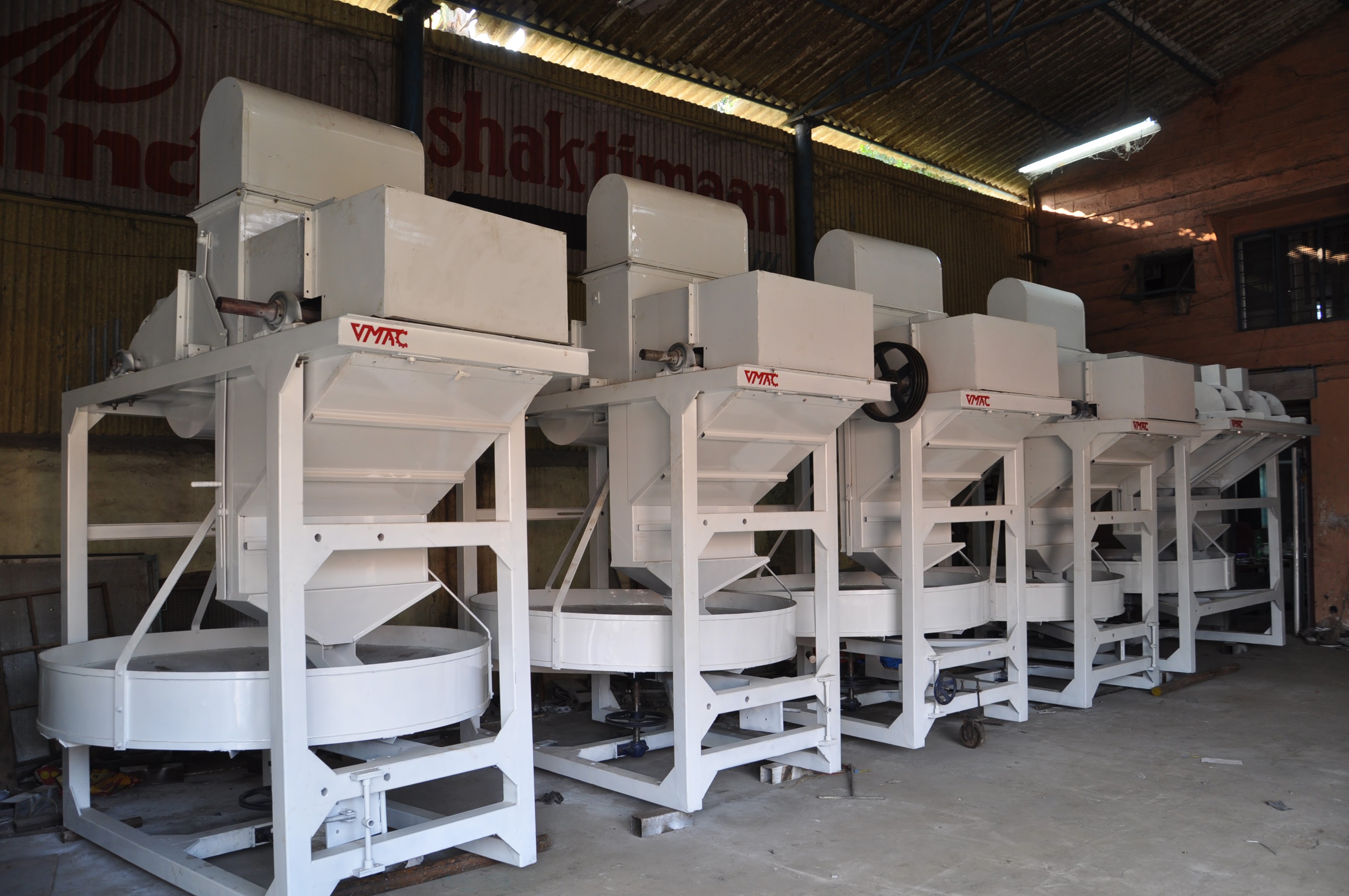
Production
Mastering Coffee Production
At Vmac Industries, we've mastered the balance between traditional craftsmanship and modern technology.
Discover cutting-edge methods and equipment that ensure your coffee maintains its freshness, flavor, and quality throughout its journey from processing plant to consumer.
After investing time and resources into pre-cleaning, hulling, sorting, and potentially roasting, the last thing you want is for your coffee beans to lose their quality due to inadequate packaging or storage. While these final steps might appear secondary, they play a critical role in preserving the distinctive flavors and aromas that delight your customers. This article explores contemporary innovations in packaging and storage—from vacuum-sealed bags to silo systems—helping you safeguard your beans’ integrity and enhance your brand’s reputation.
Coffee beans are hygroscopic, meaning they readily absorb moisture and odors from their surroundings. Poor packaging leaves them vulnerable to staleness, losing the subtle notes that command premium pricing.
Coffee can pick up off-flavors from exposure to air, plastics, or other external factors. Proper materials and sealing methods act as a barrier against contaminants.
By controlling factors like oxygen, humidity, and light, advanced packaging can extend the window in which beans remain at peak flavor—vital for beans shipped overseas or stored for seasonal demand.
From a retail perspective, well-designed packaging that guarantees freshness underscores your commitment to quality, positioning your products as superior in a crowded market.
How It Works
Beans release carbon dioxide (CO₂) after roasting. One-way valves let CO₂ escape without letting oxygen in.
Why It Matters
Oxygen accelerates oxidation and staling. These valves maintain freshness while preventing bag blowouts.
Ideal For
Roasteries packaging whole-bean coffee, especially for distribution to retail shops.
How It Works
Air is extracted to create a near-complete vacuum, then the bag is sealed.
Why It Matters
Significantly reduces oxidation, boosting shelf life. However, very fresh roasted beans might need minimal air to avoid bag implosion.
Ideal For
Specialty coffees or beans bound for long shipping routes, where preserving nuanced flavors is essential.
How It Works
Bags are flushed with inert nitrogen gas, displacing oxygen before sealing.
Why It Matters
Similar effect to vacuum-sealing but less risk of crushing delicate beans or grounds.
Ideal For
Large-scale producers shipping across continents, ensuring consistent quality upon arrival.
How It Works
Often combined with one-way valves, these bags let consumers re-close them after each use.
Why It Matters
Convenience for end-users who want to maintain freshness without transferring beans into new containers.
Ideal For
Retail products, direct-to-consumer subscriptions, or gift sets.
Features
Temperature and humidity sensors that regulate airflow, ensuring beans remain in optimal conditions for weeks or months.
Why It Matters
Perfect for large volumes of green beans awaiting roasting or shipment. Prevents mold and staleness during storage.
Integration
Link silo data to your processing line for real-time inventory tracking and minimal manual handling.
How It Works
Insulated facilities use HVAC systems to maintain stable temperatures and humidity.
Why It Matters
Particularly critical in regions with extreme climates. Guards beans from moisture spikes or heat waves that cause rapid quality deterioration.
Scalability
Useful for both green bean storage and roasted coffee, depending on your production scope.
How It Works
Specialized bags or containers seal beans in an oxygen-limited environment, inhibiting pests and mold without chemical fumigants.
Why It Matters
Extends shelf life for unroasted beans, especially in tropical climates where insect infestation is a concern.
Ideal For
Farms or exporters looking to maintain bean integrity during extended shipping or seasonal stockpiles.
Match Packaging to Product Type
Light-roast beans releasing significant CO₂ might do best in one-way valve bags, whereas fully degassed beans can thrive in vacuum-sealed pouches.
Monitor Oxygen and Moisture Levels
For advanced lines, consider sensors that detect humidity or oxygen infiltration, triggering alerts if conditions deviate from set thresholds.
Rotate Inventory
Adopt a First-In, First-Out (FIFO) system, ensuring older stock is sold or roasted first. This prevents hidden pockets of aging beans.
Test Packaging Samples
Conduct shelf-life experiments, cupping beans at intervals to judge flavor retention. Adjust packaging methods or materials as needed.
Educate End-Users
Encourage consumers or retail partners to store beans in cool, dark places, using resealable containers or original packaging to maintain freshness after purchase.
A specialty roastery in Europe shipping to Asia faced high rejection rates due to beans arriving stale or with diminished aromatic profiles. By switching to nitrogen-flushed, one-way valve bags, they achieved:
75% Reduction in product returns over six months.
Improved Brand Image as customers recognized consistent flavor profiles.
Extended Shelf Life that allowed them to pursue larger wholesale deals without fear of quality loss.
Key takeaway: Targeted packaging upgrades, aligned with shipping distances and product characteristics, can significantly reduce waste and enhance customer satisfaction.
Investing in modern packaging and storage innovations is crucial to preserving the effort and quality you’ve invested in processing your coffee. Whether you’re a small artisan roaster or a high-volume exporter, leveraging new technologies like nitrogen-flushed bags, advanced silo systems, or climate-controlled warehousing can safeguard bean quality from the moment processing concludes until the cup is brewed. The result? Consistent flavor, prolonged shelf life, and a strong brand reputation—all leading to greater profitability and market reach.
Lastest blog posts